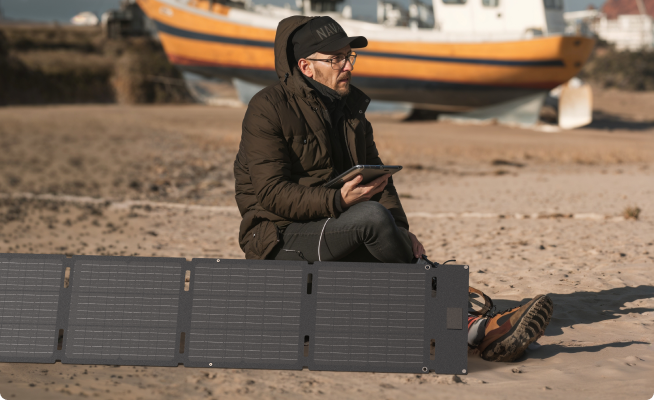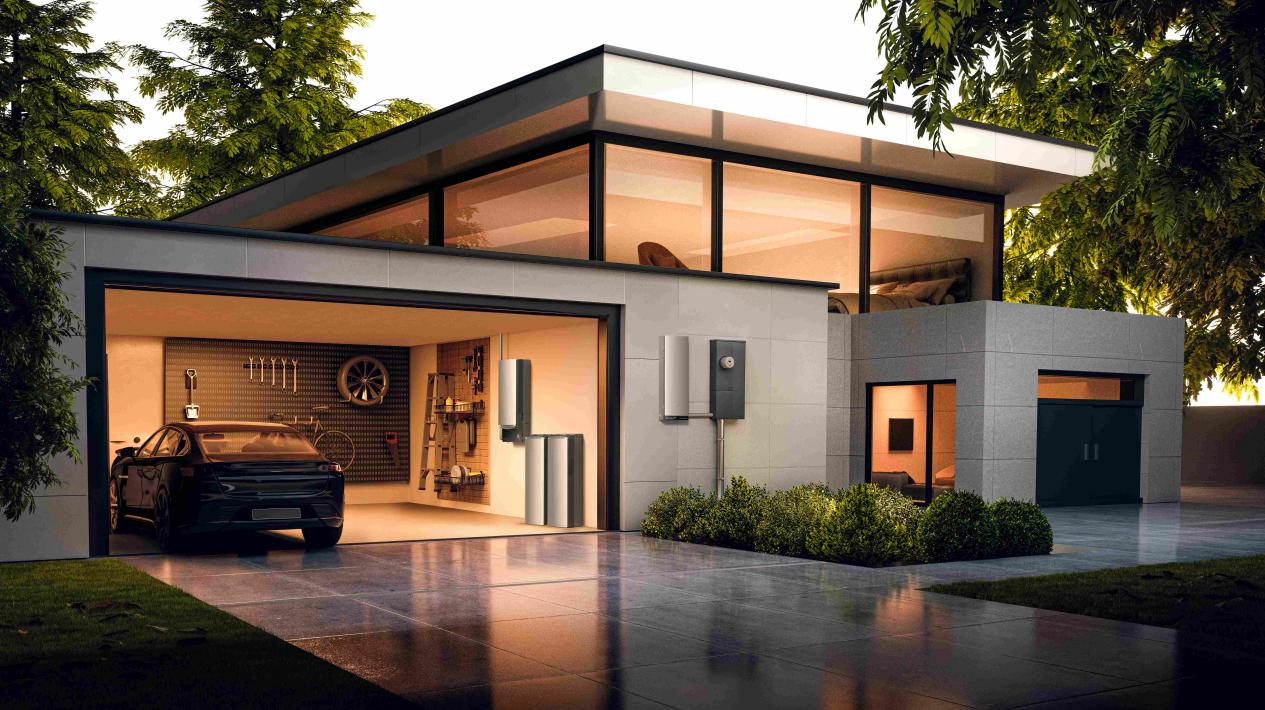Is Solar Energy Renewable or Nonrenewable?
Renewable energy comes from natural sources. These sources refill on their own. They do not run out quickly. The sun, wind, water, and heat under the ground are all examples. Renewable energy is clean. It helps people move away from coal and gas. These fuels pollute and cannot be replaced once used.
A quick look back also helps explain why renewable energy matters today. In 1839, Edmond Becquerel observed the photovoltaic effect; in 1905, Einstein explained the photoelectric effect and later won the 1921 Nobel Prize; by 1954, Bell Labs built the first practical silicon solar cell at around 6% efficiency—foundations that power today’s rooftop solar.
Is Renewable Energy Worth It?
All of this history leads to one key question: is renewable energy worth it now? The answer is yes. It helps in many ways:
Cuts air pollution
Lowers greenhouse gases
Saves fuel for future use
Supports local power use
Helps during storms or blackouts
Creates energy jobs
Works well with home batteries
Reduces power bills over time
People, the planet, and even your wallet can benefit.
Common Types of Renewable Energy
Many clean power sources exist today. Each works in a different way.
Type | How It Works | Main Use Areas |
Wind | Blades turn when wind blows. This spins a generator. | Wind farms, coastal and flat regions |
Solar | Sunlight hits panels. It turns into power using PV cells. | Homes, cities, open land |
Bioenergy | Plants and waste are burned or turned into gas. | Rural heating, fuel, power plants |
Geothermal | Heat from deep in the earth powers turbines. | Hot spots like California and Nevada |
Hydropower | Water flows through dams. This turns turbines. | Large rivers, mountain areas |
Marine | Waves and tides push devices to create energy. | Ocean zones, island regions |
Each source is different. But all of them offer power that does not depend on coal or oil.
Overview of Renewable Energy in the United States
In 2022, more than 20% of all electricity in the U.S. came from renewables. That number keeps growing. Some types give more power than others.
Type | U.S. Power Share in 2022 |
Wind | 10.30% |
Hydropower | 6.00% |
Solar | 3.40% |
Biomass | 1.20% |
Geothermal | 0.40% |
Also in 2022, renewable power passed coal for the first time ever. Solar is growing fast. It may grow 75% more by 2025. Wind may grow another 11%. Recent market trackers show strong solar buildout, with forecasts of continued expansion despite policy and supply dynamics—you can check the latest SEIA/NREL reports for current quarterly trends.


Why Go Solar: 7 Reasons
Solar energy is growing fast in the U.S. It gives people clean power, and it fits well with home energy storage. If your house uses a lot of electricity or has a battery system, solar can bring big advantages.
Solar is a good choice because:
The sun never runs out
It shines every day. Even when it’s cloudy, some solar power still comes through. Unlike fuel or gas, solar does not run dry.
It uses less land than most people think
Only 0.4% of the United States would be enough space to give solar power to the entire country. For a home, just a roof or small yard can be enough.
The price of solar power has dropped a lot
Over ten years ago, solar was much more costly. Today, the cost to install solar panels is less than half of what it used to be. In many places, people now pay less for solar power than for regular grid power. Industry updates from NREL and SEIA continue to show longer-term cost declines with occasional short-term swings.
Solar panels keep working for a long time
Once installed, they do their job for many years. You don’t need to move them or check on them all the time. They are steady and quiet.
They help during blackouts
Some new systems can bring power back to your whole house when the grid goes down. Disconnection to an unstable grid is no longer a trouble maker.
Solar is part of the future
Many homes, businesses, and towns now use solar. It keeps growing every year because it works and makes sense.
It brings local jobs
Workers install panels, fix them, and help people choose systems. Solar helps people in cities and rural places find good work.
How to Go Solar: 7 Steps
Getting started with solar is easier than most people think. With a few clear steps, you can build a system that fits your home, cuts your bills, and gives you more control over your power.
Check Your Energy Use
Start by looking at your monthly electricity bill. If your home uses a lot of power—especially for air conditioning, electric heating, or EV charging—solar can bring big savings. The more energy you use, the more solar panels and battery storage will help.
Think About Your Roof or Land
Solar panels need good sunlight. A south-facing roof works best, but east or west can also work well. If your roof is shaded or too small, ground-mounted panels in your yard might be an option. A local installer can help you check space, angle, and sun hours.
Pick the Right System Size
Larger homes need more panels and more battery storage. A 2-bedroom home might need 4–6 kW of solar, while a 5-bedroom home could need 10–15 kW or more. If you already have or plan to add a battery, size the system to match both daily energy use and storage needs.
Add a Battery if You Don’t Have One Yet
Solar alone only works when the sun is shining. A battery stores extra energy for use at night, during cloudy days, or when the grid goes down. For full energy control—especially in homes that need constant power—a battery is key.
This is where a product like EcoFlow OCEAN Pro makes a difference. It offers up to 80kWh of scalable storage, with 24kW of output, enough to power your entire home—lights, appliances, heating and cooling, all at once. It’s smart, quiet, and built to last, even in storms, heatwaves, or emergencies. The OCEAN Pro system also works with solar panels from many brands, so it can fit smoothly into your plan.
Talk to Local Solar Companies
A certified installer will help you design the best system for your roof, lifestyle, and budget. They’ll visit your home, check your electric panel, and give you a full quote.
EcoFlow works with certified local installers, so you can get fast support from people who understand your area and home type. Unlike traditional setups that require multiple brands and parts, EcoFlow OCEAN Pro is a simplified, all-in-one system. This reduces design time, wiring steps, and equipment conflicts. Installers can respond quickly, bring everything needed in fewer visits, and complete most projects in a shorter time frame.
With local expertise, fast response, and a streamlined system, EcoFlow helps large homes get reliable backup power without long delays.
Use State and Federal Help
Solar systems installed in 2025 still qualify for a 30% federal tax credit. Some states offer extra rebates, cash back, or sales tax savings. These programs can reduce your total cost by thousands of dollars, but some may end or change soon. Always confirm current eligibility, especially ownership (purchase vs lease/PPA) and any battery adders, before signing—policies evolve.
Start Small If Needed
You don’t need to go all-in at once. Many people install a smaller system first, then add more panels or batteries later. EcoFlow OCEAN Pro supports modular growth, so you can expand your setup over time without redoing the whole system.


Conclusion: Solar Energy is a Powerful and Renewable Resource
Solar energy is a renewable source. It does not run out. It cuts pollution and works well with large home batteries. The cost is dropping, and growth is strong. For homes with big power needs, solar gives clean, steady, and smart energy. Now is a good time to go solar.
FAQs
Q1. How long do solar panels typically last?
Most panels include 25–30‑year performance warranties and can keep working longer with gradual output decline. Large studies show typical degradation under about 1% per year, depending on technology and conditions. Other parts may need earlier replacement, like string inverters around 10–15 years.
Q2. Can solar panels work during cloudy or rainy days?
Yes. Panels still generate from diffuse light when it’s cloudy or raining, just at lower output. Production falls versus clear skies, but operation continues whenever daylight reaches the modules. Pairing with a home battery helps store excess energy and smooth daily ups and downs.
Q3. What maintenance do solar panel systems require?
Solar is low‑maintenance: check panels a few times yearly for dirt, debris, or shading, and clean gently if needed. Keep trees trimmed, protect wiring, and confirm mounts and roof flashing stay secure. Use monitoring and schedule professional electrical/inverter checks every 1–3 years to catch issues early.
Q4. Do solar panels increase a home’s property value?
Owned rooftop solar often raises resale value by lowering energy bills and appealing to buyers. A national study found PV homes sold at a measurable premium across multiple states. Value depends on size, age, production, warranties, documentation, and ownership versus lease/PPA.